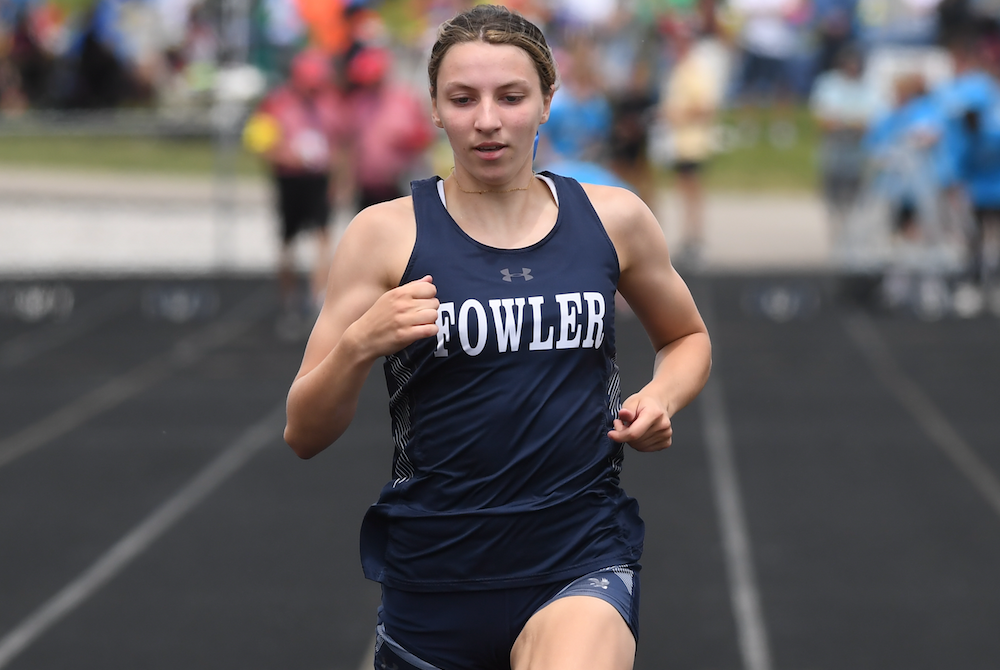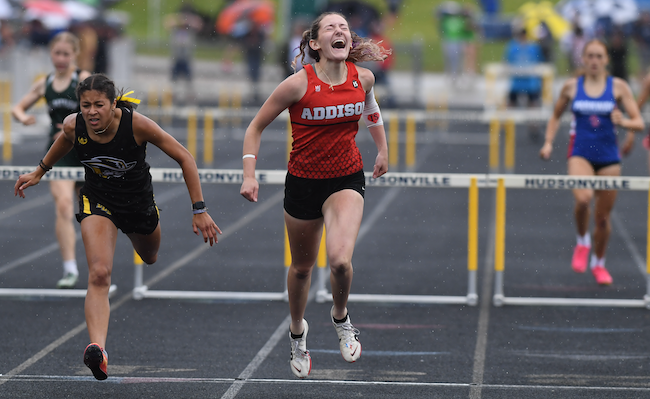
Keep on Coaching
February 1, 2013
By Geoff Kimmerly
Second Half editor
A few weeks ago, I finally got my first chance this season to watch a friend coach his basketball team. After guiding some others at the lower levels, this is his first time running the varsity – something he wasn't sure he wanted to do with a 1-year-old just learning to walk, but a challenge he ended up taking on to the benefit of all those involved.
Simply put, he’s good. I've seen a lot of teams and a lot of coaches over the past 15 years, and although I wouldn't know much of what to do if I were walking the sideline, I felt pretty qualified in telling him I was impressed – even if he didn't buy that I was offering an unbiased opinion. The best news is he’s gone from not sure about this a few months ago to talking about next season.
We know, at least anecdotally, that coaching continues to get more challenging. The time commitment has grown substantially to make running a program a year-round endeavor in a lot of sports at a lot of schools.
That commitment – especially for coaches with children of their own – was a main reason referred to in a New Haven Post-Chronicle story Saturday that noted 23 football coaching openings in Connecticut at one point this offseason. That state has 146 football teams – meaning roughly 15 percent will have new leaders this fall.
And that got me thinking about my friend, about how glad I am he’s given this a shot, and how I've seen so many others either not do so, or not stick around long despite having some pretty nice success.
A study published last winter in Interscholastic Athletic Administration magazine – a product of the National Interscholastic Athletic Administrators Association – noted some predictable results of a study that sought to determine the biggest challenges faced by first-year high school coaches.
The toughest according to the study was balancing the demands of coaching and teaching, experienced by nearly half the respondents – 98 percent of which coached high school teams and 81 percent of which are teachers.
The next six reasons all were noted by at least 30 percent of those in the study – personal fatigue, securing community support, securing and caring for facilities and equipment, parental contact, keeping non-starting players motivated, dealing with schedule interruptions and motivating athletes to achieve consistent, peak performance.
Nothing there is earth-shaking, and most if not all of these challenges are faced by high school coaches regardless of how long they've been in the field. But I got a little more perspective from some of the 32 items that ranked as least challenging to the first-year leaders – keeping in compliance with state and league regulations, dealing with substance abuse issues, teaching sport skills and creating a positive team atmosphere – things that seem most important, and yet appear to be easiest to do. I’m not sure what that tells us – but I think it tells us something.
Click to check out the entire three-page breakdown of the study, plus the researchers’ recommendations to remedy some of what first-year coaches face.
Giving back to Saginaw
I love reading about high-level athletes – like a star-studded group of alums from Saginaw – giving back to where they got their starts.
Pittsburgh Steelers star LaMarr Woodley made a big impact before the start of this school year by donating $60,000 to cover all participation fees for athletes in his former school district. The Saginaw News’ Hugh Bernreuter writes today about how Woodley (Saginaw High), the Philadelphia 76ers’ Jason Richardson (Saginaw Arthur Hill) and former Oakland Raiders standout Stu Schweigert (Saginaw Heritage) have combined to give more than $865,000 back to their home communities.
Bernreuter also mentions the non-monetary contributions of the Golden State Warriors’ Draymond Green (Saginaw High) and former Indianapolis Colts receiver Blair White (Saginaw Nouvel).
Click to read more about it.
Quote(s) of the Week
While rifling through more papers on my desk, I found an article from the Washington Post from Sept. 2011 titled “How high school sports save our schools.” I was drawn to it in part because I spent more than a decade in a newsroom, and it was a piece by a reporter covering education who instead of reporting on school boards and the like, delved into the importance of interscholastic athletics to education as a whole.
He spoke of how participation continues to grow even as resources dwindle, and of data supporting that extracurriculars like sports are more effective than academic classes in teaching leadership, teamwork, time management and “other skills crucial for success in the workplace.” Later, he mentioned a study noting that those who participate in extracurriculars earned more a decade later.
Click here to read the entre piece. These passages struck me most.
“Coaches might be the only faculty members still allowed by our culture and educational practice to get tough with students not making the proper effort. They have the advantage of teaching what are essentially elective non-credit courses. They can insist on standards of behavior that classroom teachers often cannot enforce because the stakes of dismissing or letting students drop their courses are too high. …
“Students do better in activities they choose. If we provide more of them, led by committed adults … that can make a difference. We know the bad news about education. Dropout rates are high. Achievement scores are stagnant. But sports participation is going up, despite pressure to cut it back. Let’s cheer about that and look for a way to draw in more students.”

Fowler Girls Award 1st-Year Coach with Program's 1st Finals Title since 2019
By
Keith Dunlap
Special for MHSAA.com
June 2, 2024
HUDSONVILLE — Sometimes it actually isn’t so hard to replace a legend. Just ask Fowler girls track & field coach Neil Hufnagel.
After last year, Hufnagel took over for longtime Fowler coach Jill Feldpausch, who built the program into a dynasty.
Feldpausch led Fowler to five MHSAA Finals titles from 2011 to 2019, but there was no need for anyone to feel sorry for Hufnagel going into this year.
On the contrary, it might have been the track & field version of inheriting a Fort Knox-sized gold mine.
“She left the cupboards absolutely packed,” he said.
That was evident during the Lower Peninsula Division 4 Finals on Saturday at Baldwin Middle School, where Fowler reigned supreme again with a dominant performance.
Fowler finished with 70.5 points, well ahead of the 44 collected by runner-up Portland St. Patrick.
Fowler had only one first-place event finish, and that was in the last one, taking first in the 1,600 relay in a time of 4:08.44.
But that didn’t end up mattering as Fowler used its depth to score points.
The Eagles, who finished fourth last year, snapped a mini drought by their standards.
“We talked a little bit about being workmanlike,” Hufnagel said. “We know that it doesn’t take first places to finish first in the state. We had some good team depth, and we were able to use that.”
 Saugatuck was third with 34 points.
Saugatuck was third with 34 points.
There were several individual standouts who flanked Fowler’s team victory.
Buckley senior Aiden Harrand, who will run next for Wake Forest, won the 1,600 in a time of 4:53.25 and the 400 in a time of 58.25. Harrand also finished second in the 800.
Between cross country and track, Harrand finished her high school career with 10 Finals championships and showed impressive versatility.
“It’s hard for sure,” Harrand said. “I do a lot of distance training. I have to because I have to be prepared for that mile. I think the speed comes naturally. I do a lot of speed workouts and stuff. But you’ve got to train distance.”
Another individual standout was Addison junior Molly Brown. She repeated in the 100 hurdles in a time of 15.22, and then won the 300 hurdles in a time of 45.07.
Brown was second in the 300 hurdles last year, and she obviously was thrilled to build on that defeat and set up what should be a big senior year in 2025.
“I knew the girl that beat me last year graduated, but I knew that coming in this year, I was going to have to run a really good time to win,” Brown said. “I just really wanted to win.”
In the field events, Marlette senior Olivia Findlay shined the brightest, winning the long jump with a distance of 17-feet, 4½ inches and the high jump in 5 feet, 5 inches.
Other champions included Unionville-Sebewaing sophomore Layla Bolzman in the 100 and 200, Johannesburg-Lewiston junior Allie Nowak in the 800, Whitmore Lake freshman Kaylie Livingston in the 3,200, Chesterfield Austin Catholic senior Lyla Mullins in the shot put and discus and Mason County Eastern junior Payton Haynes in the pole vault. Frankfort (400), Portland St. Patrick (800) and Whitmore Lake (3,200) also won relays. Athens junior Aleyah Deller won the adaptive 100, 200 and shot put events.
PHOTOS (Top) Fowler's Katie Spicer crosses the finish line during a sprint Saturday. (Middle) Addison's Molly Brown, right, finishes her 100 hurdles championship win. (Click for more from Ken Swart/RunMichigan.com.)

